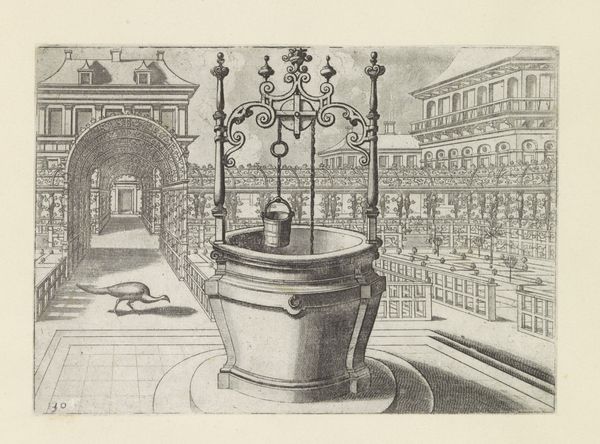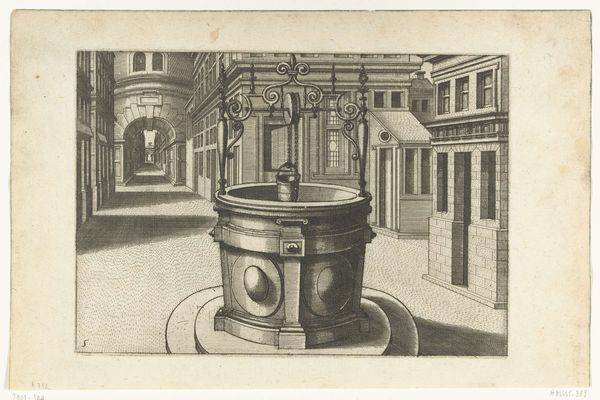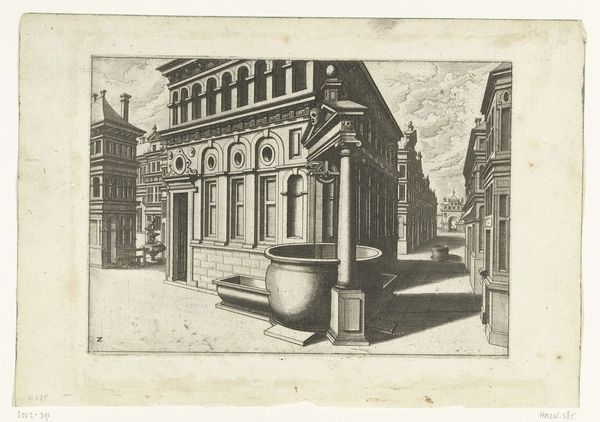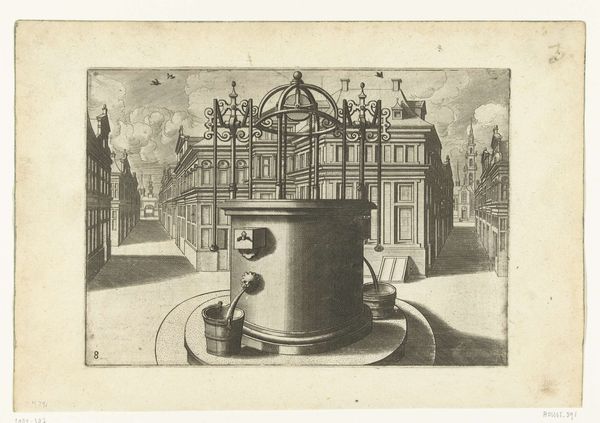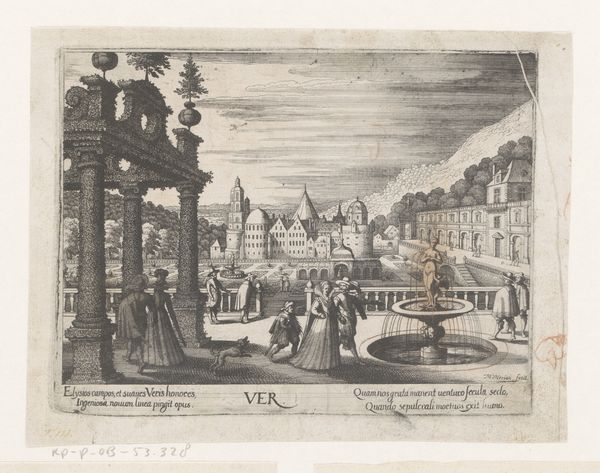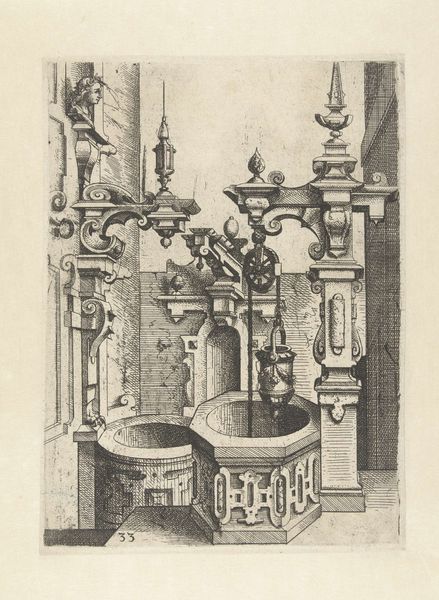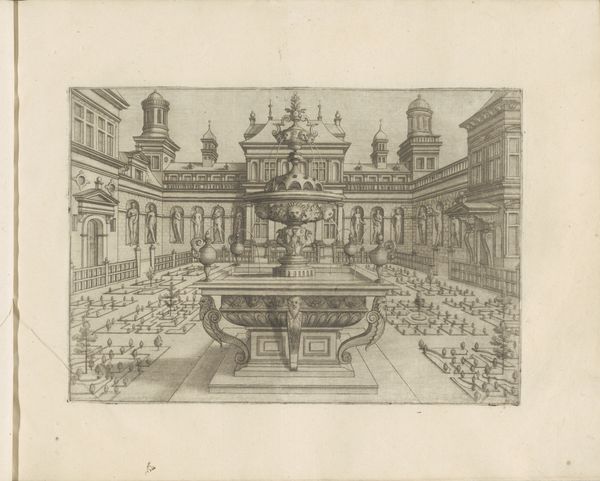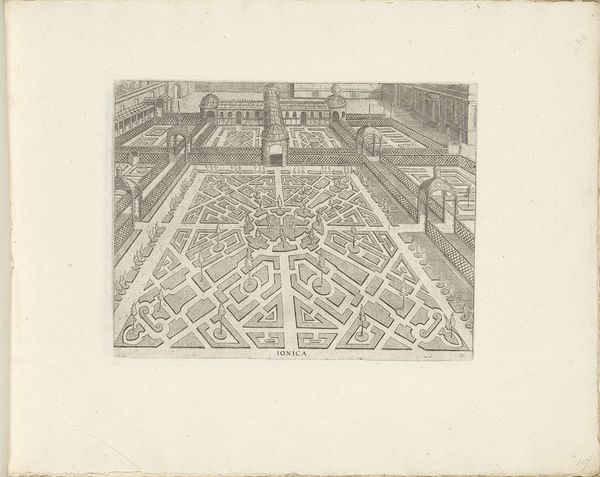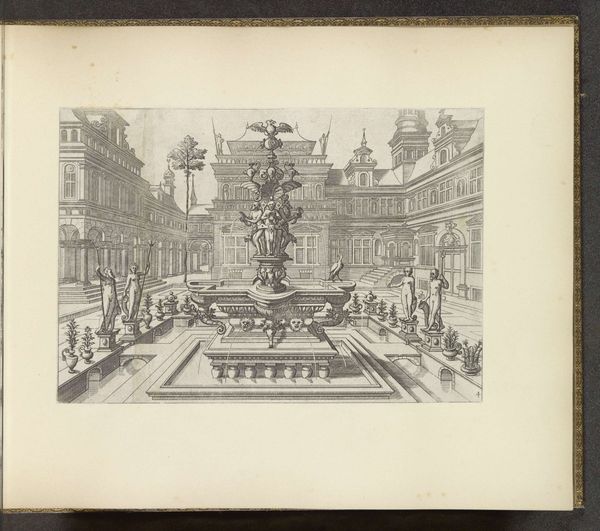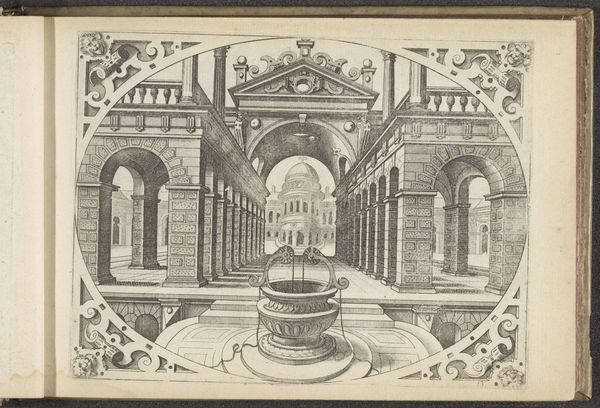
print, engraving
# print
#
landscape
#
form
#
line
#
cityscape
#
northern-renaissance
#
engraving
Dimensions: height 141 mm, width 203 mm
Copyright: Rijks Museum: Open Domain
Curator: Immediately, I'm struck by this palpable sense of constructed reality. The severe lines of the print make this landscape appear unnaturally neat. Editor: Right? It's almost theatrical, like a stage set. What are we looking at exactly? Curator: This engraving, titled "Ronde waterput in een tuin met berceaux" which translates to Round well in a garden with arbors, was created around 1574 by Johannes or Lucas van Doetechum. Currently it is at the Rijksmuseum. Editor: Okay, Rijksmuseum. Now, the perspective feels a bit off, or maybe intentionally stylized? It almost feels like M.C. Escher met a Renaissance garden designer. That peacock struts like he owns the place. Did peacocks symbolize anything back then? Curator: Absolutely, the peacock. In the 16th century, peacocks often represented pride and vanity, virtues heavily scrutinized particularly in the rising Protestant ethos. In this manicured space, that peacock becomes symbolic of the elite class it graces, reflecting perhaps their detachment from earthly labour and concerns. It subtly hints at social commentary. Editor: I'm getting this odd feeling that something sinister simmers under the surface of all that order. Is that just me? Like everything's just a little *too* perfect. Curator: These formal gardens frequently spoke to power and control, mirroring social hierarchies and the dominance of humankind over nature. The well, juxtaposed against this, introduces an element of the natural within a thoroughly controlled environment. This duality invites discussions about sustainability, ecological manipulation and access to vital resources, even then. Editor: Hmm, never thought about Renaissance gardens in terms of resource access. But looking at this well, it feels less about life-giving water, and more like another ornamental feature. It's just another item of décor, really. A symbol perhaps, of flaunted luxury and power. It's definitely not what I'd call "earthy". Curator: The brilliance of this print lies in its intricate layering, drawing connections between identity, social architecture and landscape design in a transformative period. By examining this through our present-day concerns around inequality, ecology, and social power dynamics, the print prompts dialogues crucial to both historical awareness and forward-thinking activism. Editor: Totally. It's amazing how something that looks so…formal can actually make you question, well, everything! Next time I see a perfectly trimmed hedge, I'll remember this little tableau of order and subtle unease. Thanks!
Comments
No comments
Be the first to comment and join the conversation on the ultimate creative platform.
